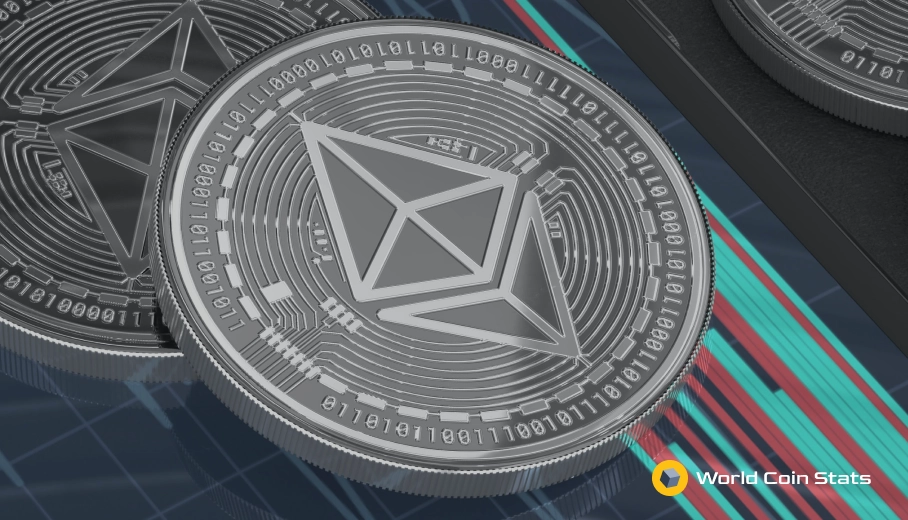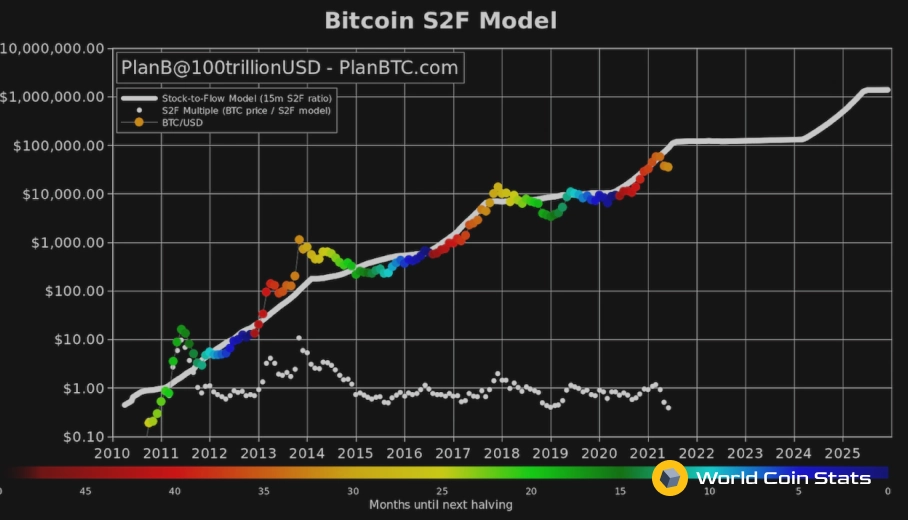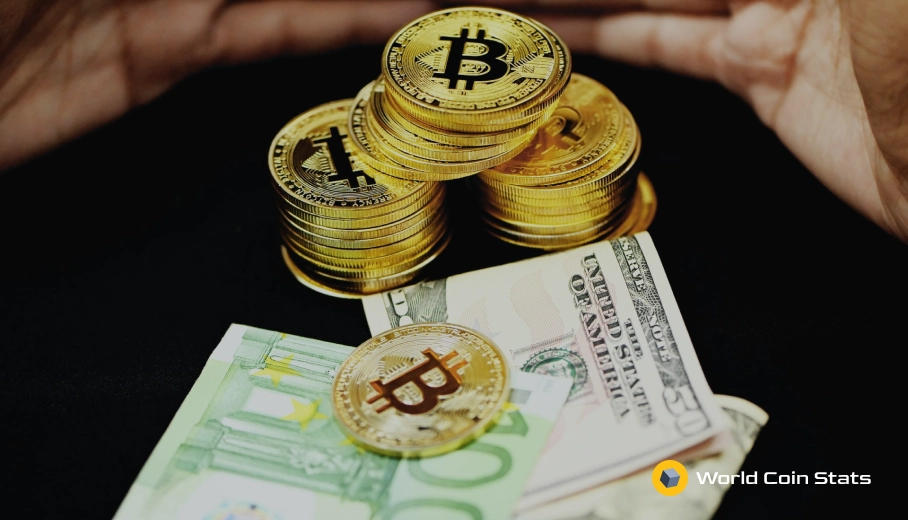What is a Layer 2 on Ethereum?
Ethereum is currently the second most popular blockchain in existence, second only to Bitcoin. This popularity of the blockchain has resulted in some congestion, which is unfortunate.
Fortunately, creative individuals have figured out a way to make Ethereum much more efficient without compromising the security of the blockchain.
The solution is called layer 2 protocols, which we will explain in detail in this article.
What Are Layer 2s on Ethereum?
The name “layer 2” should give a small hint about them. You should think of the main Ethereum blockchain as layer 1. The layer 1 is the base layer where all Ether transactions are stored and any other data that occurs on Ethereum.
This is the main blockchain.
Now, what if you could combine a large amount of data into a single transaction and then place that transaction on the layer 1 chain?
That is basically what a layer 2 does – it takes a large amount of data and then puts it on the layer 1. You get most of the benefits of the layer 1 without having to build out an entirely new blockchain because the layer 2 relies on the computational power of the layer 1.
Note: It is a little more technically complicated than rolling all transactions into a single transaction that goes onto the mainnet (layer 1), but this is a decent enough explanation to understand the general concept of a layer 2.
Are Layer 2s Necessary?
No, layer 2 solutions on Ethereum are not necessary at all. The blockchain operated the same before layer 2s ever existed.
The problem that Ethereum has run into, however, is that it could not scale very well at a certain point. There were simply too many transactions occurring on the blockchain to make it particularly useful for those that could not afford the enormous transaction fees.
High gas fees are still a problem on Ethereum despite the existence of layer 2 solutions. This is simply because not enough people are using layer 2 solutions, though.
To summarize, layer 2 solutions on Etherum are not necessary at all. One can still use the Ethereum mainchain if they want to use it, but you will pay a large amount of gas fees for even the most basic transactions.
Due to that, we recommend using a layer 2 solution when available to use. It’s just much more economical than using the main Ethereum blockchain.
Popular Layer 2s on Ethereum
There are a decent number of layer 2 networks on Ethereum. Some of them are obviously more popular than others for a variety of reasons (mostly marketing reasons). Here are some of the most popular layer 2 networks on Ethereum at the time of writing.
Arbitrum
Arbitrum is currently the most popular layer 2 on Ethereum when looked at from total value locked (TVL). It has nearly ~$3.2 billion USD in TVL, which gives it a 51% share of the total TVL on Ethereum layer 2 solutions.
It has gained so much popularity because the layer 2 gives a nearly identical experience to Ethereum without the insanely high gas fees found on Ethereum. More importantly, Arbitrum makes it very easy for developers to port dApps from Ethereum to Arbitrum.
The ease with which developers can port their dApps to Arbitrum means that almost all the popular dApps on Ethereum are also available on Arbitrum. Some of the more popular ones include Curve, Dai, SushiSwap, Uniswap, Badger, and Beefy Finance.
There are also a fair number of popular dApps that are only available on Arbitrum such as Dopex and Stabilize.
Polygon
Polygon, formerly known as Matic, has emerged as the second most popular layer 2 on Ethereum. It has its own proof of stake blockchain that allows for some extra security and decentralization compared to other layer 2 solutions, which is a big draw to many developers.
It’s still a layer 2, however, because it uses a Commit chain to post data to the Ethereum mainchain. It’s the system we mentioned earlier – Polygon confirms transactions and then sends a batch of confirmed transactions to the Ethereum mainchain.
This means the fees to use Polygon are extremely low. Users generally pay around $0.10 in gas fees for various smart contract interactions compared to the hundreds of dollars it would cost on Ethereum.
Polygon also uses Solidity for smart contracts, which makes it relatively simple for a dApp on Ethereum to launch on Polygon. Popular dApps that have launched on Polygon include SushiSwap and Uniswap.
The most popular dApps on Polygon, though, are NFT games. This is because transaction fees on the Ethereum mainchain make blockchain gaming rather difficult. Popular games on Polygon include Defense Heroes, Arc8, and Sunflower Farmers.
Optimism
Optimism is one of the newest layer 2 solutions to launch. It removed the whitelist to launch a smart contract on the network in December 2021. Previously, only dApps that were on the whitelist could launch on Optimism.
It has not experienced much growth in TVL since removing the whitelist, though. This is likely because Arbitrum already has a large lead on Optimism.
That said, Optimism still has ~$350 million USD in TVL, which is fairly impressive considering it does not have many of the extremely popular mainnet dApps like SushiSwap. Popular mainnet dApps on Optimism include Curve and Uniswap.
The most popular dApp on Optimism is Synthetix with over 40% of the total TVL on Optimism (~$164 million).
Optimism is a relatively new layer 2 solution that you should definitely keep an eye on in 2022. It will almost certainly gain in popularity as more dApps launch on it.
Will Layer 2 Solutions Die With Ethereum 2.0?
No, layer 2 solutions will not die with Ethereum 2.0. It might seem that way because Ethereum 2.0 will have extremely low gas fees when sharding is eventually released.
However, it’s unlikely that layer 2 solutions will simply disappear. The more likely scenario is that layer 2 solutions will still be used to remove a lot of bloat from the mainnet. It may even reach the point that Ethereum 2.0 mostly exists to settle transactions on layer 2 solutions – we find that unlikely, but it still remains a possibility.
Overall, we would not worry about the long-term future of layer 2 solutions. In fact, the long-term viability of layer 1 solutions not named Ethereum is a larger issue than the viability of layer 2 solutions on Ethereum.
Closing Thoughts
That mostly covers it for a brief explanation of layer 2 networks on Ethereum. These solutions are the future of Ethereum and will be around for a very long time. The increased speed and lower transaction fees make them perfect for those that don’t want to pay an absurd amount in Ethereum gas fees.
The use will not stop once gas fees drop on Ethereum, though. Their use will save a tremendous amount of bloat on the mainchain, which gives them long term viability as an alternative to the Ethereum mainchain.




